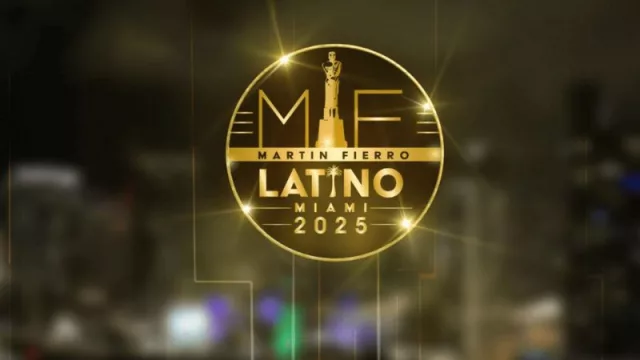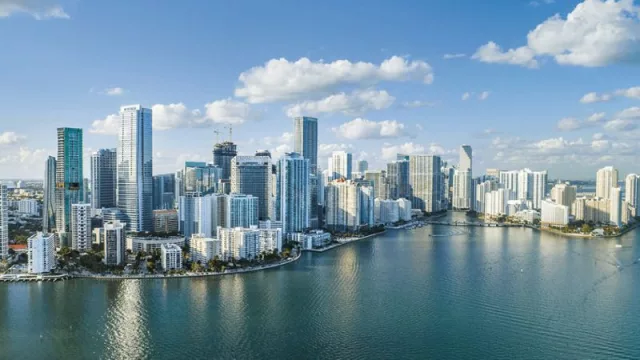Geopolitical Deconstruction in Real Time
-
Trump bet on Milei. Milei always bet on Trump. In Miami, there were key, strategic meetings, and intelligence was provided a year in advance about players, alliances, and betrayals surrounding President Milei. Even before his election, there was crucial support from the Latino community, global business leaders, Trump, the government and the Jewish community, and many international figures such as Meloni.
-
Florida—Miami—is the “symbolic,” cultural, and now geopolitical capital of Anglolatina. Trump spends more time in Miami than in the White House. And never has Latin America been so important—and so central—to a U.S. president and administration.
-
Miami is on pulse—not only Argentines, but Venezuelans, Colombians, Brazilians, and the large Jewish community are tracking, minute by minute, the reversal of 80 to 100 years of economic, international, cultural, and democratic stagnation in a country that has been a leader and a strategic linchpin across the continent.
-
In Miami today, WhatsApp groups and social feeds are front and center. The cultural, economic, and social transformation of a country so admired by Americans—and especially by Miamians—also rides the “Messi effect,” a powerful calling card.
-
That’s why U.S. tech entrepreneurs, agricultural producers, energy players, tourism, media, real estate, and the agro‑metal sector backed—and continue to track in real time—the Argentine shift.
And of course, this momentum fuels additional positive changes across the region—in Venezuela, in Colombia, and yes, in Brazil as well.
Exclusive Strategic Analysis by Infonegocios Miami
-
The numbers don’t lie: 40.72% versus 31.67%. Nearly 2 million votes apart. This isn’t a mere electoral win; it’s a tectonic realignment of Argentina’s political preferences.
-
Including the four districts that together account for 60% of the electoral roll (Buenos Aires, CABA, Córdoba, and Santa Fe).
The New Geopolitical Board
-
Argentina has completed its transition to a new political paradigm. For Miami—and especially for the Argentine business community in Florida—this presents both opportunities and existential challenges.
-
The next 90 days will be critical. Companies that grasp the depth of this shift and move quickly will capture meaningful value. Those who underestimate the speed of what’s coming will be sidelined in the new economic ecosystem.
-
The time to act is now. The window is measured in weeks, not months.
Neuro‑Analysis of the Electorate: The Mass Migration of Votes
-
Buenos Aires Province—the national political bellwether—registered an unprecedented electoral migration. Fuerza Patria lost 261,592 votes in barely six weeks, while LLA gained 881,417 ballots. This massive shift reflects more than a change in preference: it’s a collective cognitive reprogramming.
-
Political neuroscience teaches that voters don’t cast ballots solely on ideology—they vote on emotional identity. Violet is no longer just a party color; it’s an identity marker.
Miami and the Argentine Diaspora: Direct Economic Implications
For the Argentine community in Florida—particularly in Miami—these results carry immediate, tangible consequences:
-
Investment flows: Milei’s consolidation will accelerate the repatriation of Argentine capital from Miami, creating opportunities across real estate and financial services.
-
Corporate re‑positioning: Argentine companies in Miami will need to recalibrate their Argentina strategies, anticipating more aggressive market‑liberalization policies.
-
Economic diplomacy: The Argentine Consulate in Miami will become a focal point for bilateral deal‑making, with an emphasis on technology, energy, and professional services.
Argentines in Florida—estimated at over 125,000—are among the most economically active diaspora groups. Their influence on trade between Argentina and the U.S. Southeast is disproportionately significant.
Key Data WON BY LA LIBERTAD AVANZA (15)
-
Buenos Aires – 41.45% (3,605,127 votes)
-
CABA – 47.35% (770,804 votes, deputies); 50.32% (840,747 votes, senators)
-
Córdoba – 42.35% (822,240 votes)
-
Santa Fe – 40.67% (681,504 votes)
-
Mendoza – 53.64% (531,734 votes, in alliance with UCR)
The Cordoba Paradox: Schiaretti vs. The Violet Wave
-
In Córdoba, where the provincial ruling party under Martín Llaryora and former governor Juan Schiaretti bet on the political center with Provincias Unidas, the outcome was decisive: 42.35% for LLA versus 28.32% for the governing alliance.
-
This result debunks the “center as an alternative” thesis and confirms that polarization remains the main engine of Argentine politics. The third way failed to find traction because today’s electorate operates on a binary spectrum: establishment versus anti‑establishment.
PROVINCES WON BY FUERZA PATRIA/PERONISM (7)
-
Formosa – Frente de la Victoria
-
Catamarca – Fuerza Patria
-
Tucumán – Tucumán Primero (47.28% in September)
-
San Juan – Fuerza San Juan
-
La Pampa – Defendemos La Pampa
-
Santa Cruz – Fuerza Santacruceña
-
La Rioja – Federales Defendamos La Rioja (margin: 0.30%)
OTHER REGIONAL FORCES
-
Santiago del Estero – Frente Cívico por Santiago (Gerardo Zamora)
-
Corrientes – Vamos Corrientes (Gustavo Valdés, Radical)
CRITICAL NUMERICALS
NATIONAL TOTALS
-
La Libertad Avanza: 40.72% (9,314,147 votes)
-
Fuerza Patria and allies: 31.67% (7,245,834 votes)
-
Absolute difference: 2,068,313 votes
EVOLUTION IN BUENOS AIRES PROVINCE (37% of the roll)
-
September 2025: FP 47.28% (3,820,119 votes)
-
October 2025: FP 40.91% (3,558,527 votes) – down 261,592 votes
-
LLA: 41.45% (3,605,127 votes) – up 881,417 votes since September
2023 VERSUS 2025 COMPARISON
2023 – LLA won in 7 provinces:
-
Chubut, Córdoba, Jujuy, Mendoza, Salta, San Luis, Santa Fe
-
2025 – LLA repeats in those 7 and adds 8 more
STRATEGIC ELECTORAL MIGRATION
LOSSES FOR FUERZA PATRIA
Buenos Aires: −261,592 votes versus September
-
Represents: a 3.7‑point drop
GAINS FOR LA LIBERTAD AVANZA
-
Buenos Aires: +881,417 votes versus September
-
Córdoba: +70,812 votes vs. 2023
-
Santa Fe: +31,695 votes vs. 2023 (rising from 32.34% to 40.67%)
ESSENTIAL CONTEXT: DISTRIBUTION OF THE ELECTORAL ROLL
-
Buenos Aires: 37%
-
Córdoba: 9%
-
Santa Fe: 8%
-
CABA: 7%
-
Top 4 districts combined: 61%
HISTORICAL COMPARISON, 2023
Unión por la Patria (2023): 14 provinces
-
Buenos Aires, Catamarca, Chaco, Corrientes, Entre Ríos, Formosa, La Pampa, La Rioja, Misiones, Río Negro, San Juan, Tierra del Fuego, Tucumán, Santiago del Estero
-
National vote share 2023: 37.4% (9,176,543 votes)
SPEED OF CHANGE
-
Buenos Aires: 14‑point swing in 49 days
-
Córdoba: +9.35 points vs. 2023
-
Santa Fe: +8.33 points vs. 2023
NATIONAL TREND
-
National gap: 9.05 points in favor of LLA
-
Consolidation: 15 of 24 districts (62.5% of the territory)
-
Dominance: 60% of the electoral roll concentrated in LLA‑led provinces
Historical Perspective: Lessons from Political Realignments
This realignment echoes:
-
Peronism in 1945: the creation of a new political identity
-
Alfonsinism in 1983: democratic restoration driven by personal charisma
-
Menemism in 1989: radical economic transformation
As Steven Levitsky documents in “How Democracies Die,” large‑scale electoral realignments often precede deep institutional transformations.
Required Reading to Understand the Phenomenon
-
The People vs. Democracy, by Yascha Mounk (analysis of contemporary populisms)
-
Why Nations Fail, by Daron Acemoglu (political institutions and economic development)
-
Neuropolitics, by William Connolly (where neuroscience meets political behavior)
-
The Age of Revolution, by Hobsbawm (historical context for radical transformations)
Read Smart, Be Smarter.
Infonegocios Miami—Economic, Cultural, and Business Intelligence with a Global Lens
© 2025 Infonegocios Miami.
Read Smart, Be Smarter!
https://infonegocios.miami/suscribite-al-newsletter
Contact: [email protected]
Infonegocios NETWORK: 4.5 million Anglo-Latinos united by a passion for business.
Join us and stay informed












Tu opinión enriquece este artículo: